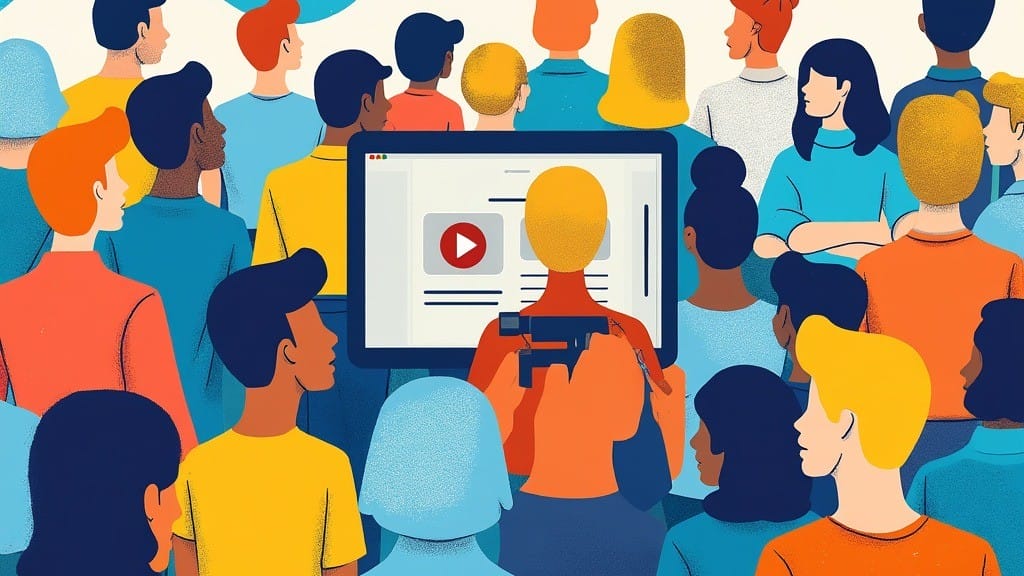In today’s crowded digital landscape, creating video content that genuinely resonates with your target audience is more crucial than ever. The foundation of this success lies in a deep understanding of who your audience is. Knowing your audience allows you to craft content that feels personalised, relevant, and impactful, driving higher engagement and better results.
Conducting Audience Research
Understanding your audience begins with research. This research involves identifying key demographics like age, gender, and location, which help determine the tone, style, and platform for your videos. For instance, younger audiences might prefer shorter, dynamic content on platforms like Instagram or TikTok, while older demographics might lean towards more detailed content on YouTube or LinkedIn. Understanding these basic characteristics helps in tailoring the message and ensuring it reaches the right people at the right time.
But demographics are just the beginning. To truly connect with your audience, you need to delve into psychographics, which includes their interests, values, and lifestyle choices. By understanding what your audience cares about, you can create content that aligns with their passions and beliefs. For example, if your target audience values sustainability, producing videos that highlight your brand’s eco-friendly practices will resonate more deeply and build a stronger emotional connection.
Another critical aspect of audience research is analysing behaviour. This includes understanding how your audience consumes content—what types of videos they watch, what platforms they use, and what prompts them to engage or make a purchase. By analysing these behaviours, you can create content that fits seamlessly into their viewing habits and speaks directly to their needs. For example, if your audience is research-oriented, providing in-depth tutorials or product demos might be more effective than short promotional clips.
Gathering feedback directly from your audience is also invaluable. Surveys, polls, and social media listening can provide insights into what your audience wants and how you can better serve their needs. This direct line of communication allows you to refine your content strategy continuously, ensuring it remains relevant and effective.
Tailoring Video Content to Audience Needs
Once you have a comprehensive understanding of your audience, the next step is to tailor your video content to meet their specific needs. This involves addressing their pain points, providing solutions, and speaking their language. For instance, if your audience struggles with time management, a series of videos offering quick, actionable tips could provide significant value. Tailoring content in this way not only makes it more relevant but also positions your brand as a helpful resource that understands its audience’s challenges.
Personalisation is another powerful tool. By speaking directly to your audience’s unique experiences and preferences, you create a sense of familiarity and trust. This could involve using specific industry jargon, referencing shared experiences, or even segmenting your audience to deliver more targeted content. For example, a fitness brand might create separate video series for beginners, intermediate users, and advanced athletes, each offering content tailored to their specific needs and skill levels.
The format and style of your videos should also be guided by audience preferences. Different audiences have different platform preferences, and your content should be adapted accordingly. For instance, younger audiences might engage more with short-form, vertical videos on platforms like TikTok, while older or more professional audiences might prefer longer, more detailed content on YouTube or LinkedIn. Ensuring your videos are optimised for the platforms your audience uses most frequently is crucial for maximizing reach and engagement.
Engagement strategies should also be tailored to your audience. Interactive content, like polls, quizzes, or Q&A sessions within your videos, can boost engagement and provide additional insights into your audience’s preferences. Additionally, the calls to action (CTAs) in your videos should be designed with your audience’s behavior in mind. If your audience tends to be research-driven, inviting them to download a whitepaper or watch a detailed tutorial might be more effective than a straightforward sales pitch.
Why Knowing Your Audience Matters
Understanding your audience is not just about creating content they’ll enjoy—it’s about creating content that drives results. Audience-centric videos are more likely to be shared, commented on, and acted upon because they resonate on a personal level. When your audience feels like your content speaks directly to them, they’re more likely to engage with it, trust your brand, and become loyal customers.
Moreover, knowing your audience allows you to optimize your marketing spend. Instead of creating generic content that tries to appeal to everyone, you can focus your resources on content specifically designed to engage your target audience. This targeted approach increases the efficiency of your marketing efforts, leading to better return on investment (ROI) and more effective campaigns.
Conclusion: Making Audience Knowledge Your Competitive Advantage
In today’s competitive landscape, understanding your audience is more than just a best practice—it’s essential for success. By conducting thorough research into your target audience’s demographics, psychographics, and behaviours, you can tailor your video content to speak directly to their needs, challenges, and interests. This audience-centric approach not only increases engagement but also drives better business results.
As you develop your video content strategy, remember that the more you know about your audience, the more effectively you can connect with them. Whether through personalised messaging, targeted content formats, or relevant engagement strategies, leveraging audience insights can set your brand apart and build lasting relationships with your viewers.





